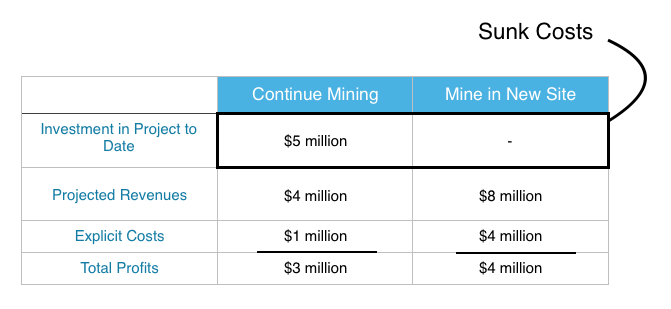Sunk Cost
What is Sunk Cost?
Definition:
Sunk costs refer to expenditures that have already been made and cannot be recovered or changed, regardless of future decisions or actions. In business and economics, sunk costs represent past investments that are irrelevant to current decision-making processes.
Analogy:
Think of sunk costs as the toll paid for a road trip. Once you’ve paid the toll to use a particular road, whether you continue the journey or turn back, the toll remains a sunk cost. Similarly, in business, sunk costs are expenses incurred in the past that cannot be recouped, regardless of subsequent choices.
Further Description:
Sunk costs can arise from various investments, including capital expenditures, research and development expenses, marketing campaigns, and training programs. Once these costs have been incurred, they are considered sunk and should not influence future decision-making.
- Money spent on developing a product that ultimately fails to gain market traction.
- Investments in equipment or technology that becomes obsolete due to advancements in the industry.
- Expenses associated with a marketing campaign that does not yield the expected results.
- Training costs for employees who leave the company shortly after completing their training.
Why are Sunk Costs Important?
Understanding sunk costs is crucial for making rational business decisions. Failing to recognize sunk costs can lead to irrational decision-making, where past investments influence future choices, even when they are no longer economically viable.
Decision Isolation: It’s essential to isolate sunk costs when evaluating future decisions and focus on incremental costs and benefits. Past expenditures should not influence the assessment of current or future opportunities.
Opportunity Costs: Instead of fixating on sunk costs, businesses should consider opportunity costs—the potential benefits foregone by choosing one option over another. By focusing on future prospects, companies can optimize resource allocation and maximize returns.
Forward-Looking Perspective: Effective decision-making requires a forward-looking perspective, where investments are evaluated based on their expected future returns rather than past expenses.
Examples and Usage:
- A company invests significant resources in a project but realizes it is not meeting its objectives. Despite the sunk costs, the company decides to abandon the project and allocate resources to more promising ventures.
- An organization purchases new software but finds it does not meet the company’s needs. Instead of continuing to invest in the software due to sunk costs, the company explores alternative solutions that offer better value.
Key Takeaways:
- Sunk costs are expenses that have already been incurred and cannot be recovered.
- They should be disregarded when making future decisions to avoid irrational choices based on past investments.
- Understanding sunk costs enables businesses to focus on opportunity costs and future prospects, optimizing resource allocation and maximizing returns.
Table of Contents





